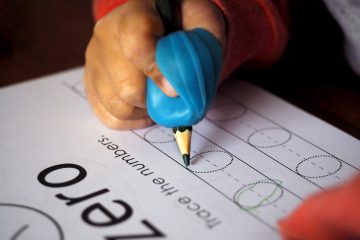
On the back of the recent discussions on mental health in lockdown, we shouldn’t forget how children have been affected. It’s likely they are not in an optimal place after a long time of home learning and isolation from their peers. They probably need some self-care and empowerment too, so let’s take a look at some ways reading can help a child’s mental health:
- Reading for language and cognitive development
- Reading for social-emotional development
- Reading for escapism
Reading books can be all-around beneficial for kids of all ages – read on to find out how…
Books are invaluable for many reasons. They cheer us up when we are down, allow us to escape our mundane lives and help us learn about the world around us. They are forever our teachers, and they can do wonders for our mental health – who hasn’t distracted themselves with a book on a long journey or picked up a book with characters going through similar life situations? Reading helps us decompress, learn coping techniques, and work through our emotions. And kids can do that too – they just need the books.
Your local library is no doubt full of books for your children to borrow, read and learn from. Some stores even sell collections focused on issues children may be facing and need help working through.
There are plenty of books out there your child can relate to and learn from to improve their mental health, but here are a few other ways reading can be a mental health benefit:
Reading for language and cognitive development
At its core, reading is all about improving literacy in children, but it’s so much more than that! With a better literacy level, children have been said to have more opportunities in the future and are likely to end up in higher management roles. It all starts with that first book.
Reading to your child when they are too young to read themselves is an excellent way to bond with them, introduce them to the written word, and begin their love of reading. With regular sessions, they can start to recognize words and increase their language development. It’s essentially the basics of their reading skills and helps them better express themselves and learn to communicate with others more efficiently.
Often, younger children’s books come with tactile additions such as touch, feel, and sound effects. These valuable additions help keep children engaged in the book for longer and allow them to connect with it physically. These kinds of books engage all the senses for an immersive experience that aids their cognitive development.
What’s more, it’s probably the first time they are able to learn and become accepting of other cultures and experiences. It helps them understand how different people live and expands their horizons outside their home lives. It essentially helps your child become a tolerant, welcoming, and accepting person.
Reading for social-emotional development
This exposure to other cultures is an important step in their social development. When a child understands and recognizes that other cultures are normal and accepted, they are likely to find it easier to make friends and new connections.
For example, if a child were to read a book that contained LGBTQ+ characters or those of a different race, then when they meet people with similar characteristics in real life, it won’t phase them.
Reading books is a really simple way to show children how wide and different and exciting the world around them is. It shows them that there is more to explore and connect with outside their house and local area and encourages them to be brave when the opportunity comes to go outside their comfort zone.
On a more emotional level, reading can empower children and help them understand any confusing things they may be feeling. Reading about people going through similar emotions allows them to recognize what they are feeling is normal. They can then empathize and learn how to deal with it. It’s almost like therapy in a way, but instead of speaking to a psychiatrist, they can safely read, explore, and work out for themselves what they can do.
Reading for escapism
Finally, there’s the ability of books to take you away and into new, magical, and funny lands. This escapism acts as a distraction to everyday life and provides us with the chance to forget about any stress or negative thoughts. Children’s books are much more likely to have magical lands, new worlds, and fantastically colorful scenarios for them to indulge. These themes have the double benefit of being both an escape and fuel for their creative fire.
Whether it’s the words helping them imagine brilliant things or the illustrations drawing them into the world – children respond in different ways, but the result is the same – reduced stress, escape from the everyday, and overall improved wellbeing. Even just reading a joke book can get those laughs rolling in and the endorphins rushing.
Reading any book is an escape, which is something we are all looking for after a year plus of lockdowns and social distancing.
As you can see, reading has multiple positive effects on the mental health and wellbeing of adults and children. So, why not sit down together and read a book? Or visit the library to choose your own stories – the benefits are numerous, and it is one of the easiest forms of self-care to adapt into your routine.
Guest post written by Jack Teare


